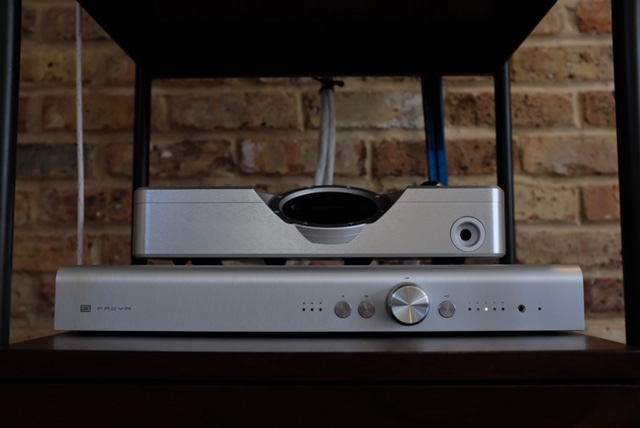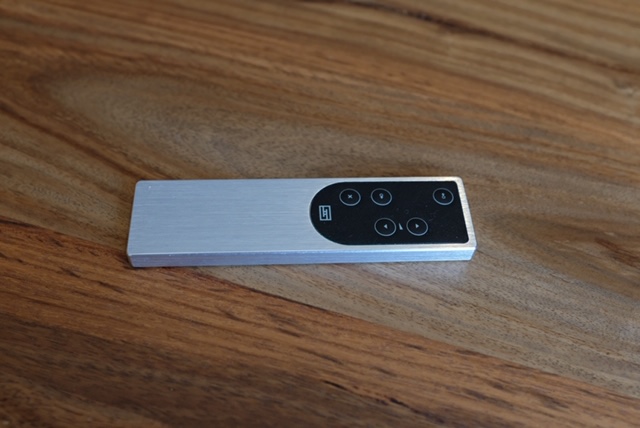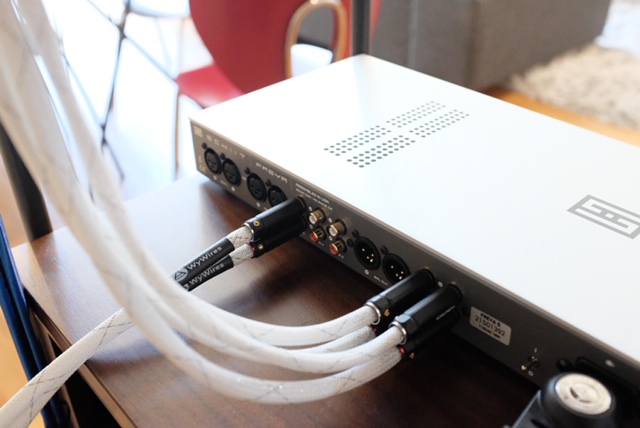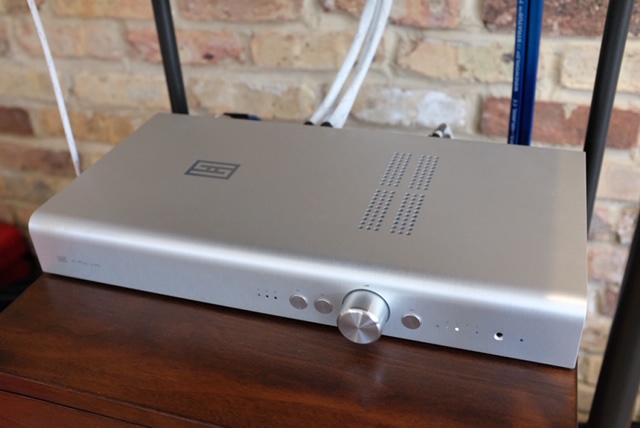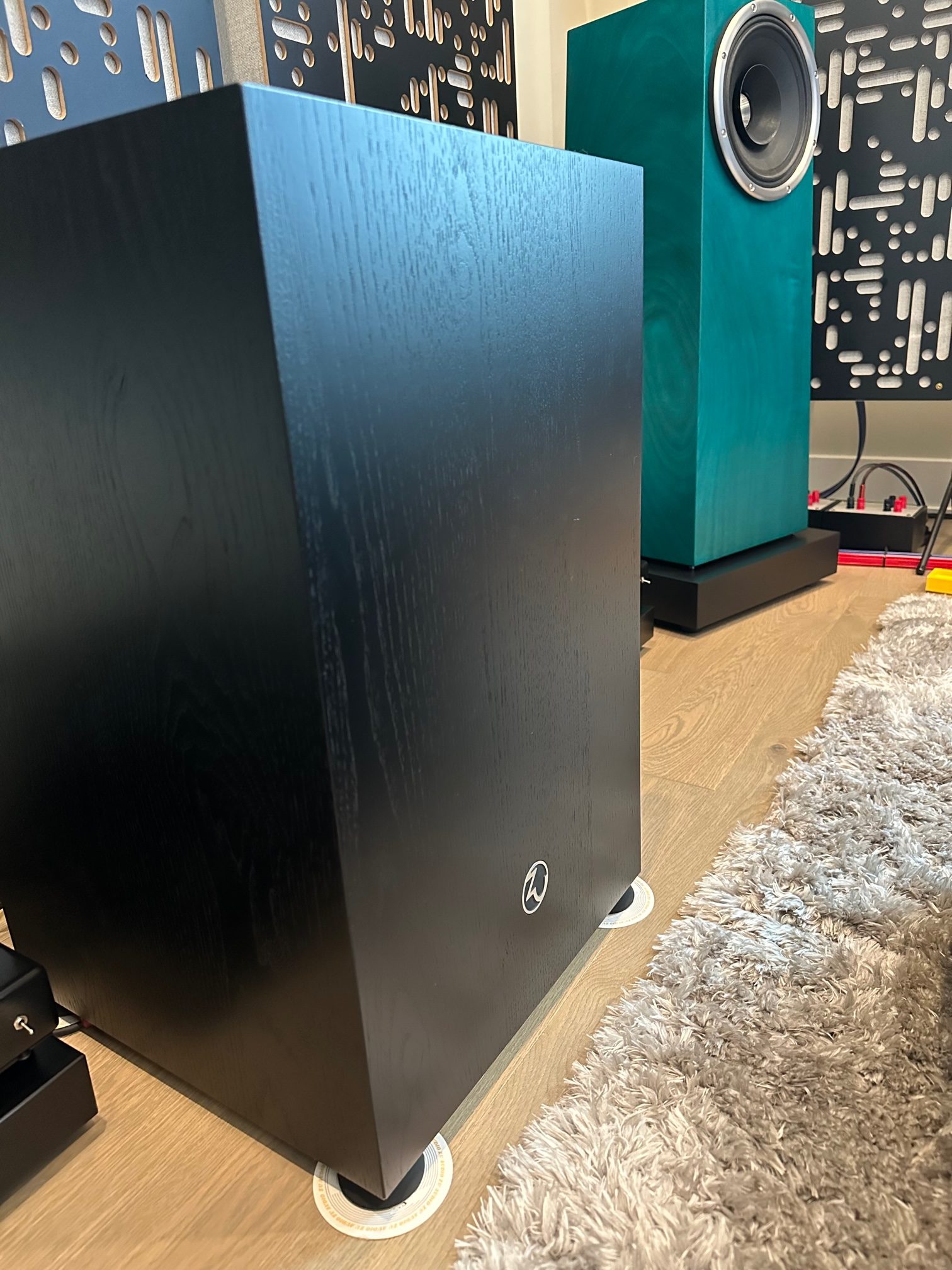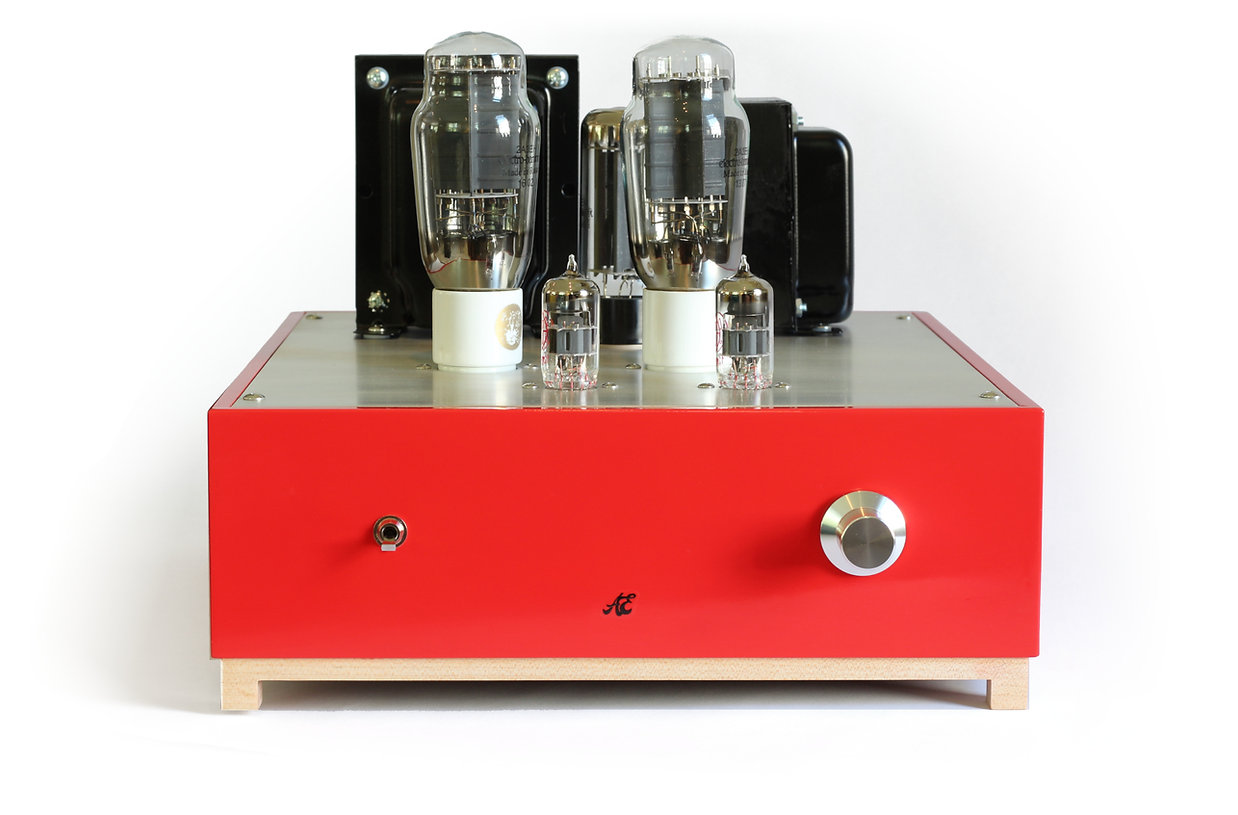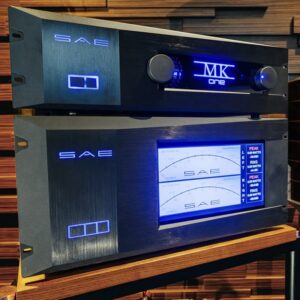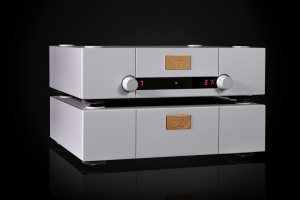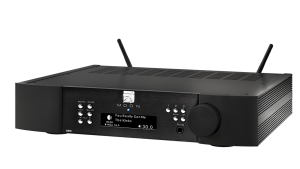Schiit is a name that many in the audiophile community know and love. My first tube amp was actually the Schiit Vahalla, and I have owned the Asgard, Lyr, and Mjolnir in the past and currently have a Gungnir Multi-bit DAC that I use in my office. Needless to say, I have always liked Schiit; their products provide value, and their design aesthetic matches my personal taste.
Recently, my primary headphone system found itself in need of a preamp, and I set out to find a preamp that provided a very specific set of features. It needs to offer both passive and active preamp functionality. When set to 100% volume in passive mode, it needs to be a true pass-through, and when in this mode it needs to be transparent. In a perfect world it would also have a buffer mode, and it would be able to handle both single ended and balanced inputs. Finally, it would have two single ended outputs. Believe it or not, I came up with this list before seeing the spec sheet for the Schiit Freya S. When I read over the spec sheet for the Freya S for the first time I could not help but to grin from ear to ear, it was exactly what I was looking for. The ultimate question was could the Freya S fit into a system that retails for over $25,000 and keep up with the other components? I was determined to find out.
Schiit was nice enough to send me a Freya S for review, and I have had it in my system for the last two months and I have been incredibly happy. We will dive into more details shortly, but to get straight to the point, the Freya S is now permanent member of my reference headphone system.
A Product of the Thunderdome
The Freya S looks great paired with the Chord Dave
In 2018 Schiit introduced the concept of the thunderdome. The idea was to create products and then test if they would sell. If they did, more would get made, and if not then the product would be discontinued. One product that got the thunderdome treatment was the Freya Preamp. For the thunderdome they made two versions, the Freya S and the Freya +. The Freya S is an entirely solid-state preamp with a passive mode, a buffer mode, and an active gain mode. In active mode it uses Schiit's proprietary Nexus differential gain topology. One of the benefits of this topology is that it works with both single-ended and balanced inputs, and in buffer or active gain mode it seamlessly converts from single ended to balanced and vice versa. This was an important feature for me as my entire system is single-ended, and I wanted to ensure the solution I chose was flexible for the future, but did not treat single-ended as an afterthought.
The Freya + on the other hand was a tubed version of the Freya S, it still featured a passive mode, a buffer mode, and an active gain mode. However, the active mode is tubed, and it trades the Nexus differential gain topology for a differential triode input with a semi-circlotron follower. The Freya + also has all the additional hardware to support the high voltage rails required for the tube gain stage.
Choosing between the two, in theory, is simple, if you want tubes choose the Freya + and if you want a solid state choose the Freya S. In my case transparency was the goal, and I planned to keep the preamp in passive mode or buffer mode most of the time, so the Freya S aligned more with my needs. To my surprise, the Freya S actually lost the thunderdome to the Freya +. My understanding is that once the Freya S sells out, it will likely not be restocked. I personally think this is a shame, however, I appreciate the way Schiit is approaching product development, and sales numbers don't lie. All that being said, the Freya S is a really special product and worth auditioning before they are gone forever.
Diving into my use case for the Freya S
My reference headphone system consists of two SET (Single-Ended Transformer) headphone power amplifiers from ampsandsound, a Chord Dave, a Chord M-Scaler, and a streamer. My goal was to insert a preamp in between my Chord Dave and the two SET amps. I wanted the preamp to act as a splitter, and a volume trim, as both of my headphone amplifiers do not have their own volume pot. The volume trim function was really important because the Chord Dave has excellent digital volume control, but outputs 3 volts on its single ended output at all times. The result is that with more sensitive headphones, like the Focal Stellia, the noise floor can become audible.
Now, for the above use case, a passive preamp would have covered all of my needs. However, I wanted to make sure it had a remote control, as I plan to add additional sources to this system in the future, and may want to use the built-in volume control as more than a trim feature. I also wanted an active gain stage as I will eventually add a set of high efficiency speakers. While, I do not need additional gain with my headphones today I will likely want additional gain with a set of speakers in the future.
The ultimate question was: in passive mode will the Freya S be transparent enough to be unnoticeable with the rest of my system?
Review Equipment
- Chord Dave and Chord M-Scaler
- ampsandsound Bigger Ben and custom Kenzie Amplifier
- Hifiman Susvara and Focal Stellia
- Wywires Platinium Interconnects and Headphone Cables
- Wireworld Platinum Starlight BNC cables
- Final Touch Audio Callisto USB cable
Unboxing and First Impressions
As always, Schiit's packaging is minimal, and I am perfectly fine with that. I would much rather have the cost of the product spent on the product itself instead of fancy packaging. The box contained the Freya S, remote, manual, and power cord. Schiit also sent a set of the PYST balanced interconnects that are perfect for connecting the Gumby when the Freya S is sitting directly on top of it.
The Freya S uses Schiit's unity chassis, which looks great. As I said above I am a big fan of Schiit's minimalist design aesthetic. The controls on the front of the preamp are nicely laid out, and I have yet to need the manual. The back of the preamp is clearly labeled and groups balanced inputs, single ended inputs, and then the outputs in a logical way.
One thing I like to check is if the single-ended inputs and outputs can handle larger RCA connectors. I have had issues with this on other products, but my Wywires Platinum RCA cables easily fit on the Freya S.
The remote is similar in size to the old silver Apple remotes. It does not have a power button, but one of the nice things about a solid state preamp with a passive mode is that you really don't ever need to turn them off. I found the remote responsive, easy to use, and well laid out. I never had issues dialing the volume in just right.
The volume knob is similar (if not identical) to the ones used on Schiit's other amps. It has great resistance, and it is nice that it has hard stops for 0% and 100%. However, I wish there was some sort of light up indicator that told me the volume level. I usually sit about 14 feet away from the preamp and cannot see the little dot on the volume knob.
After plugging in the preamp, turning the volume knob results in a flurry of clicks. These clicks are the 128 step relay controlled volume control doing its thing. This, for me, was the main reason the Freya S caught my interest. I have had other equipment that provided relay controlled volume control, and that equipment started at $4500. Schiit's implementation is excellent, provides perfect channel matching, and was pretty much transparent. Some may not like the clicks, but I will tell you that the clicking happens on the higher end equipment, and is a small price to pay for the performance. As I stated above, but want to make sure I restate, when the Freya S is in passive mode, and the volume knob is at 100%, the Freya S acts as essentially a wire. For my use case this was important, but in general it is a great feature that is oddly not all that common.
Passive Mode Experiences
There plenty of room for the large Wywires RCA connectors
Most of my time was spent with the Freya S in passive mode. Why passive mode? Well for one, all of my source equipment has plenty of gain for my headphone amplifiers, and the Chord Dave is more than capable of driving the preamp and the connected amplifier without engaging the solid state buffer functionality of the Freya S.
The first question was, how transparent is the Freya S? The Chord Dave on its own is an excellent preamp/DAC. In my experience adding components in front of the Dave, especially a component as affordable as the Freya S, will likely result in reduced transparency of the overall system.
With the Freya S in passive mode and volume set to 100%, I began playing my usual list of music. After listening I switched back to just having the Dave run directly to the amplifier, and then back again. I did this several times throughout the review period. I can very comfortably say that when the Freya S is set to 100% and is in passive mode that it truly does not add any coloration to the sound. I was impressed. I have had other preamps that provide passive volume control and bypass functionality that were far less transparent in bypass mode and that cost several times more money.
Now, as I explained in the beginning of this review, have two headphone power amps. One amp is more or less exclusively used with the Hifiman Susvara. I am able to connect the Chord Dave directly to this amp and use the Dave's digital volume control with no background noise, due in no small part to the Hifiman Susvara's lack of efficiency. However, my second amplifier is meant to be used with more efficient headphones. Unfortunately, the line noise from the Dave coupled with my amplifiers gain causes the noise floor to be too high for my Focal Stellia (104 dB/mW). Remember, my headphone amplifiers do not have a built in volume control pot.
Placing the Freya S into the circuit (in passive mode), I put on the Focal Stellia and adjusted the volume down starting from 100% until the noise floor disappeared (just under 50% on the Freya S's volume knob). Sometimes passive preamps sound lifeless, or at least lacking in dynamics. With my components the Freya S seemed to once again be transparent. I did not feel like I was missing out on dynamics, details, or space.
Because of the noise floor, it was harder to test the Freya S in and out of the system with the Focal Stellia, so once again I grabbed the Hifiman Susvara. Putting the Chord Dave into DAC mode (fixed volume) and using the Freya S for volume control, I looked for differences. I would describe passive volume control on the Freya S as excellent. While there was a slight decrease in space within the recording, I am splitting hairs. It was otherwise as if the Freya S was not in the circuit, and for me, that was exactly what I wanted.
Buffer and Active Gain Modes
I wanted to take the time to test out the buffer and active gain modes. Unfortunately, both raised the noise floor of my system into audible territory, but I am listening with headphones on high gain headphone amps so this is not surprising.
My interest in the buffer and active gain modes were to support a future use case of connecting high efficiency speakers to my headphone power amps. I believe these features will work excellently in the future, and I look forward to being able to use them more often.
For this review though, I wanted to take the time to listen to the active gain stage and the buffer. In theory, the buffer mode should be just as transparent as the passive mode if done right. To be clear, it is rare that I hear a buffer mode that lives up to that expectation. Once again the Freya S impressed, other than an increase in noise floor the buffer sounded identical to the passive mode with the volume at 100%, and it fixed the slight decrease in space. Reducing the volume and engaging the buffer produced the same result.
When the Freya S has the buffer or the active gain stage engaged it supports converting balanced inputs to single ended outputs (or single-ended inputs to balanced outputs) as a byproduct of the Nexus differential gain stage. In my testing, I found the Gumby going into the Freya S in balance mode lost nothing in its transition to the single ended output. I also connected the Freya S to my main speaker system which use Emotiva XPA-1L balanced mono-block amplifiers. I was unable to detect any noticeable differences when the volume level was matched between the Gumby providing a balanced or single ended signal into the Freya S.
Finally, testing out the active gain stage, the result is that the sound stage takes a step forward. You go from row 20 to row 10 and dynamics appear to increase but not in a negative or artificial way. Amplification is neutral and while there is more drive, I do not feel like any specific frequency range is boosted. In my testing, the active gain stage is not as transparent as the passive mode or buffer mode. To be clear it should not be, but it was as if someone dropped a thin veil in front of the artists when listening. Again, this is splitting hairs, and it is important to remember that my reference is a Chord Dave with no preamp which is one of the most transparent and detailed DACs you can buy.
What I would have loved to see
If it is not clear, the Freya S is excellent. It would be excellent at $2000, and it is a down right steel at $599. Is it perfect? No, but is it perfect at its price? Absolutely! What would make it perfect at any price?
I wish the Freya S had a tape loop. I know most people do not use them, but I find it a great way to add room correction that can be easily pulled out of the circuit. You can also use tape loops for tone control and the ability to seamlessly switch it in and out of the circuit is crucial for the way I listen to music.
I would have also loved to see a channel balance option. Several preamps that implement volume control using a relay system to offer the ability to offset the volume position on the relay ladder for a given channel. This is not a big deal to me, but it seems like a missed opportunity.
Finally, as I mentioned above, I really wish there was a visual indicator of the volume level that could be seen from across the room. Again, not the end of the world but it would have been nice.
Wrap Up
The Freya S is a feature rich solid-state preamplifier. It has an excellently implemented relay based volume control. It has an incredible passive mode, an excellent buffer mode, and a really good active gain mode. It supports single ended and balanced sources, and it seamlessly converts between the two in buffer and active gain modes. I do not know what more you could ask for at its $599 price tag.
I know I cannot find something as versatile that sounds this good at this price. I tried and could not so, I bought my review sample. Schiit has always packed a ton of value into their products. Some companies do that and sacrifice quality along the way. In my experience, Schiit has always built excellent products, that hit way above their price tags, and the Freya S is not an exception to this rule.
Finally, it is important to note that the buffer and passive modes of the Freya S are identical on the Freya +. Choosing between the two preamps really comes down to if you want tubes. Whichever route you choose to go , I am fairly certain that you will be happy.
Freya S Preamplifier
Retail: $599
Schiit Audio





